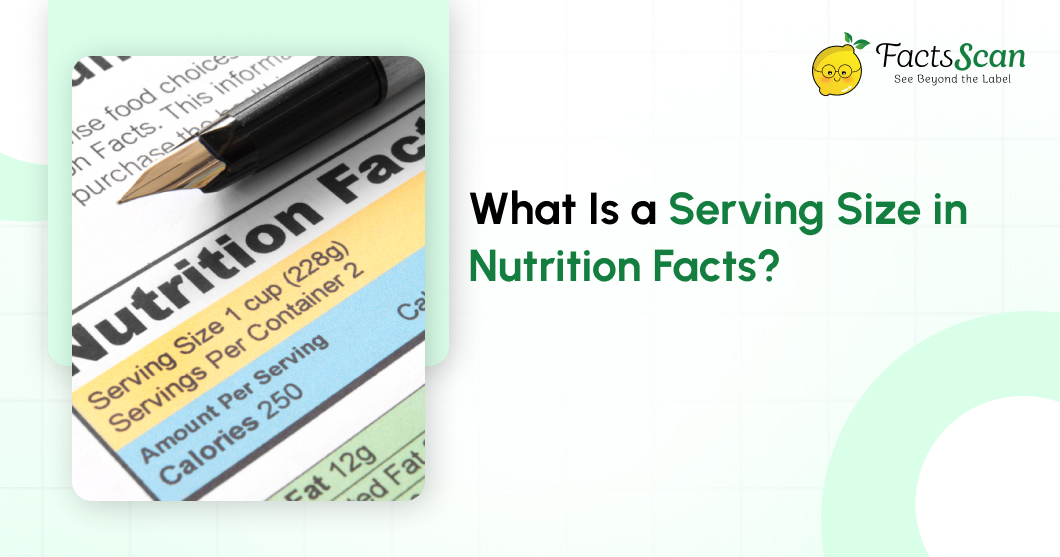What Is a Serving Size in Nutrition Facts?
Summary :
A serving size is the amount of food most people eat at one time, shown on Nutrition Facts labels. It helps you see how many calories and nutrients are in that amount of food. It’s not a recommendation, just a guide. If you eat more or less than the serving size, the calories and nutrients you get will change. Understanding serving sizes helps you make healthier food choices.
Have you ever opened a bag of chips or a soda bottle thinking, “This is just one serving,” only to realize later you’ve eaten way more calories than you expected? You’re definitely not alone! Understanding serving sizes can be tricky, but it’s one of the simplest ways to eat smarter and stay on track with your health goals. Let’s dive into what serving sizes really mean and how they can help you make better food choices.
What Exactly Is a Serving Size? Let’s Clear It Up
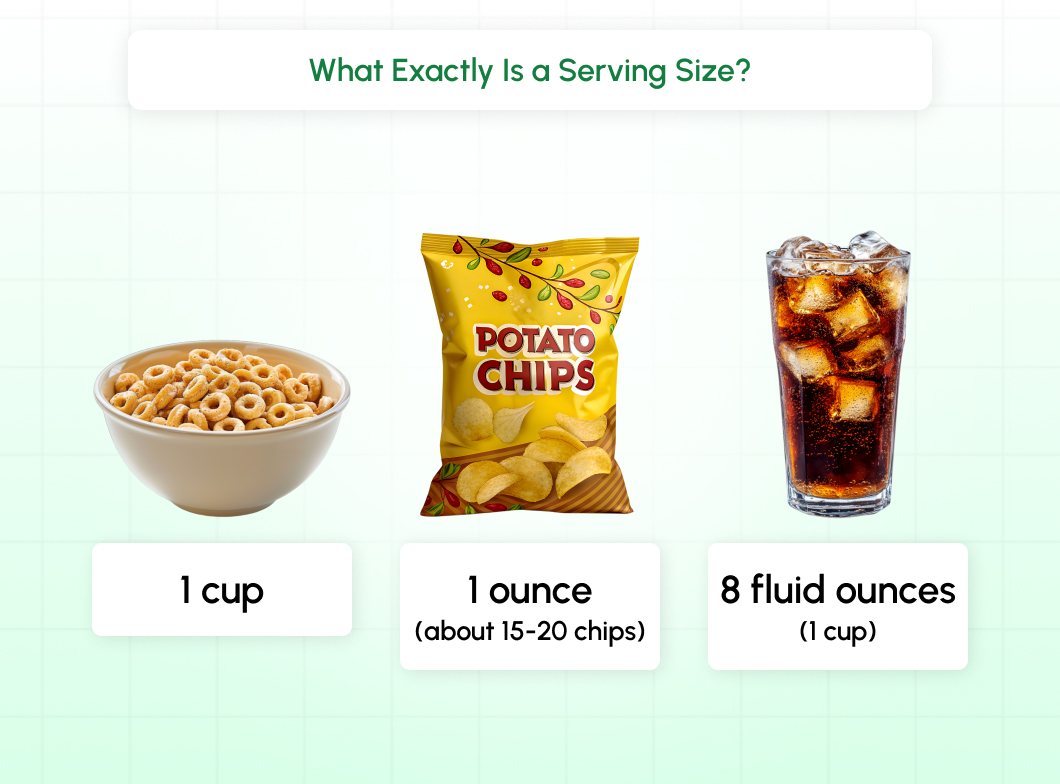
A serving size is the amount of food or drink that the nutrition facts on a label are based on. It’s usually measured in familiar terms like cups, pieces, or ounces. For example:
- One serving of cereal might be 1 cup.
- One serving of chips might be 1 ounce (about 15-20 chips).
- One serving of soda might be 8 fluid ounces (1 cup).
But here’s the catch: a portion is how much you actually eat. So if you pour yourself 2 cups of cereal, that’s two portions – or two servings – and you need to double the calories and nutrients listed on the label.
Who Decides What a Serving Size Is?
Serving sizes aren’t made up randomly. In the United States, the FDA (Food and Drug Administration) sets serving sizes based on what people typically eat, not necessarily what they should eat. In India, this is regulated by the FSSAI (Food Safety and Standards Authority of India). These organizations use studies and surveys to figure out average consumption amounts and standardize serving sizes on labels.
Why Should You Care About Serving Sizes?
Here’s why paying attention to serving sizes is a game-changer:
- Weight management: Eating more servings than you think means more calories, which can add up quickly.
- Accurate calorie counting: If you don’t know how many servings you’re eating, your calorie tracking will be off.
- Better health decisions: Nutrients like sugar, sodium, and fat are listed per serving. Eating extra servings means you might be consuming more than your daily limit.
- Avoiding portion distortion: Over time, we’ve gotten used to bigger portions, which can trick us into overeating.
Common Serving Size Mistakes to Watch Out For
- Mixing up serving size and portion: Just because you eat a whole package doesn’t mean it’s one serving.
- Ignoring the label: Many people skip reading serving sizes altogether.
- Underestimating intake: You might think you’re eating one serving, but you’re actually eating two or three.
- Getting used to oversized portions: Restaurant and packaged food portions are often bigger than the serving size on the label.
How to Read Serving Sizes on Nutrition Labels

Here’s a quick guide:
1. Look at the top of the Nutrition Facts label. You’ll see the serving size listed in household terms (cups, pieces) and grams.
2. Check how many servings are in the package. This tells you how many servings you’re eating if you finish the whole thing.
3. emember: All calories and nutrients listed are for one serving only.
Example: A soda bottle might say:
- Serving size: 8 fl oz (1 cup)
- Servings per container: 2.5
- Calories per serving: 100
If you drink the whole bottle (20 fl oz), you’re actually consuming 2.5 servings, or 250 calories.
Real-Life Examples: Serving Sizes in Everyday Foods
| Food Item | Serving Size | Servings Per Package | What Happens If You Eat It All? |
|---|---|---|---|
| Potato Chips | 1 oz (about 15-20 chips) | 3 servings | You triple the calories and fat listed |
| Cereal | 1 cup (30g) | Varies | Eating more means more sugar and calories |
| Soda | 8 fl oz (1 cup) | 2.5 servings | Multiply calories and sugar by 2.5 |
| Ice Cream | 2/3 cup (about 140g) | Usually 2 servings | Double the calories if you eat a full cup |
Pro Tips for Smarter Eating and Label Reading
- Always check the serving size first. Don’t just glance at calories.
- Use measuring cups or a kitchen scale to get a feel for actual serving sizes.
- Look for dual-column labels that show nutrition per serving and per package.
- Be mindful of portion distortion – restaurant portions can be much bigger.
- Use your hand as a guide: A serving of meat is about the size of your palm; a serving of veggies is about the size of your fist.
- Plan your snacks and meals so you’re not eating mindlessly.
Frequently Asked Questions (FAQs)
Q1: Is a serving size a recommendation for how much I should eat?
No, serving sizes reflect what people usually eat, not what you should eat. They help you understand the nutrition info.
Q2: Can one package have more than one serving?
Yes! Many packages contain multiple servings. Always check “servings per container” to know how many servings you’re actually eating.
Q3: How do I avoid overeating when portions are bigger than serving sizes?
Measure your food, pay attention to serving sizes, and use tools like measuring cups or apps to track your intake.
Conclusion: Take Charge of Your Health with Mindful Eating
Serving sizes might seem small, but they hold the key to smarter eating. By understanding and paying attention to them, you can better manage your calorie intake, avoid overeating, and stay on track with your health goals. Next time you grab a snack or meal, take a moment to check the serving size – your body will thank you!
Want to make healthy choices without the confusion? Download the FactsScan app today from Google Play Store and App Store and instantly scan packaged food labels to understand serving sizes, harmful ingredients, and healthier alternatives – all in one tap!
If you want, I can also help you create social media posts or quick tips based on this blog!
Ready to make Healthier Choices?
Download FactsScan now from the Google Play Store and App Store and take charge of your food choices.

Recent Articles
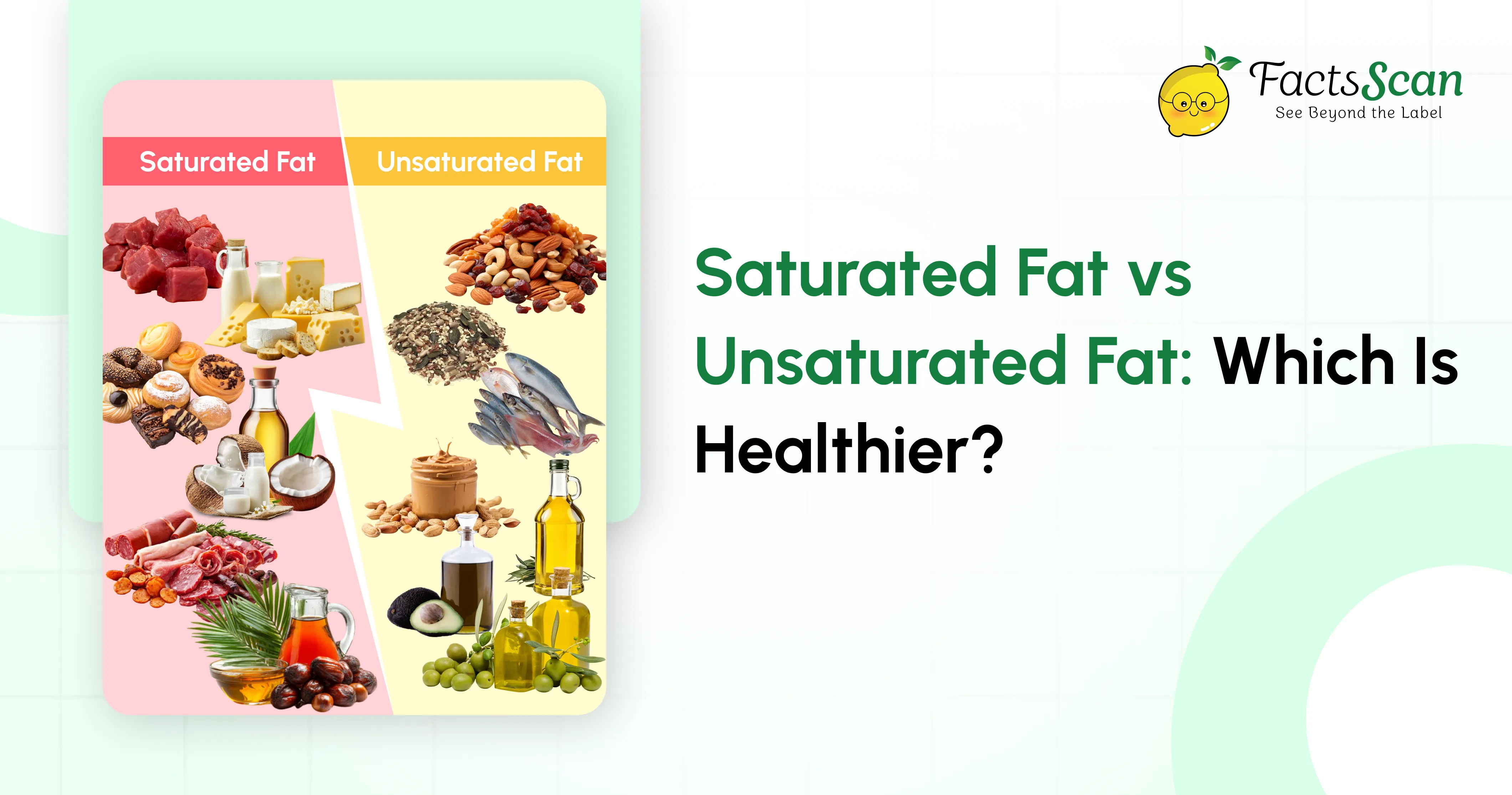
Saturated Fat vs Unsaturated Fat: Which Is Healthier?
Saturated and unsaturated fats affect our health in different ways. While saturated fats—commonly found in meat, butter, and full-fat dairy—can increase cholesterol levels, unsaturated fats, present in nuts, seeds, and vegetable oils, help improve heart health. Prioritizing unsaturated fats over saturated ones can lead to better overall wellness.
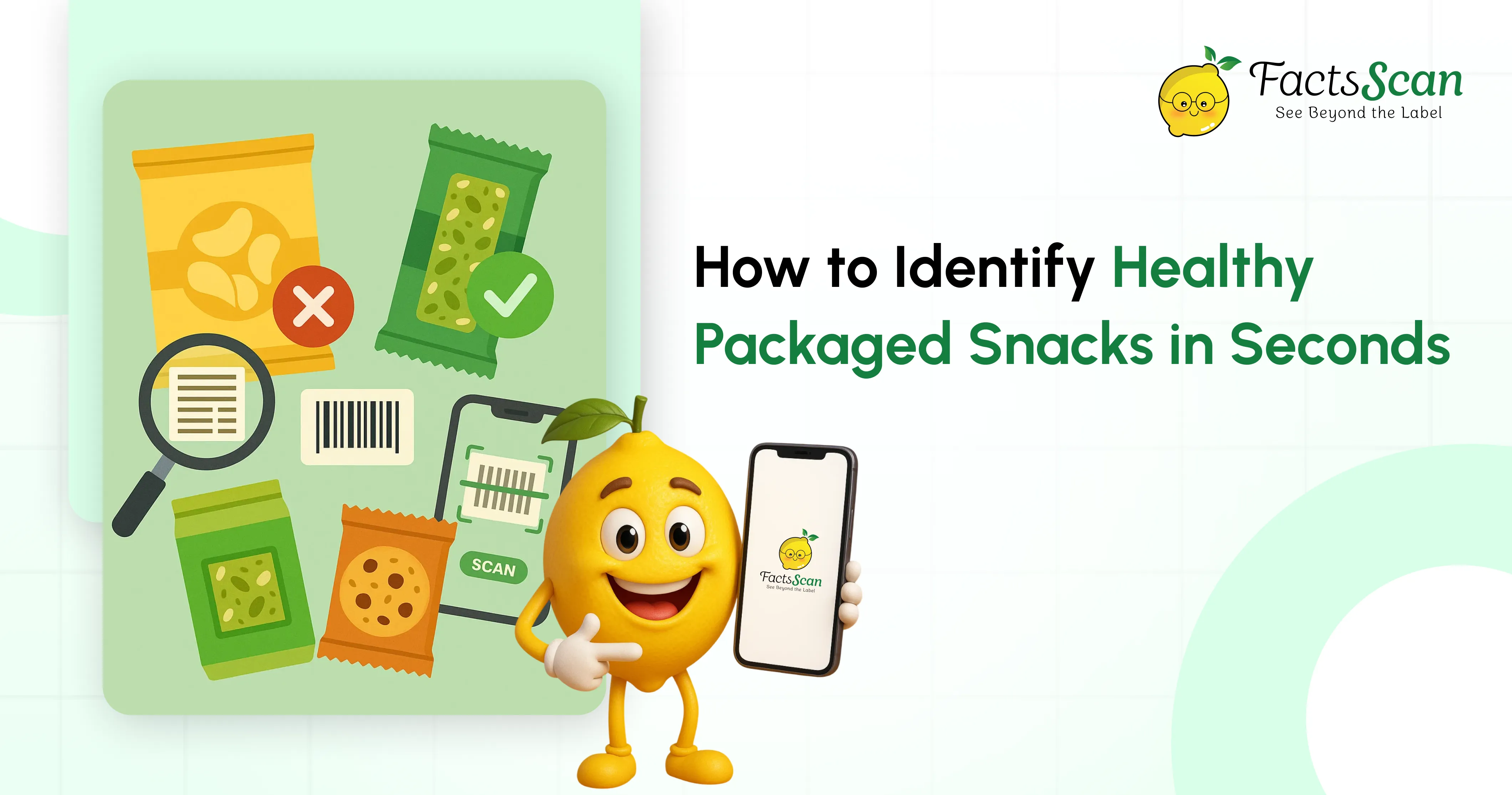
How to Identify Healthy Packaged Snacks in Seconds
Finding healthy packaged snacks is challenging when clever marketing disguises nutrition facts and confusing labels hide harmful ingredients. Smart shoppers can decode labels instantly using simple nutrition checks, ingredient red flags, and powerful food scanning apps like FactsScan that reveal health scores, ingredient warnings, and suggest better alternatives with just a quick barcode scan.
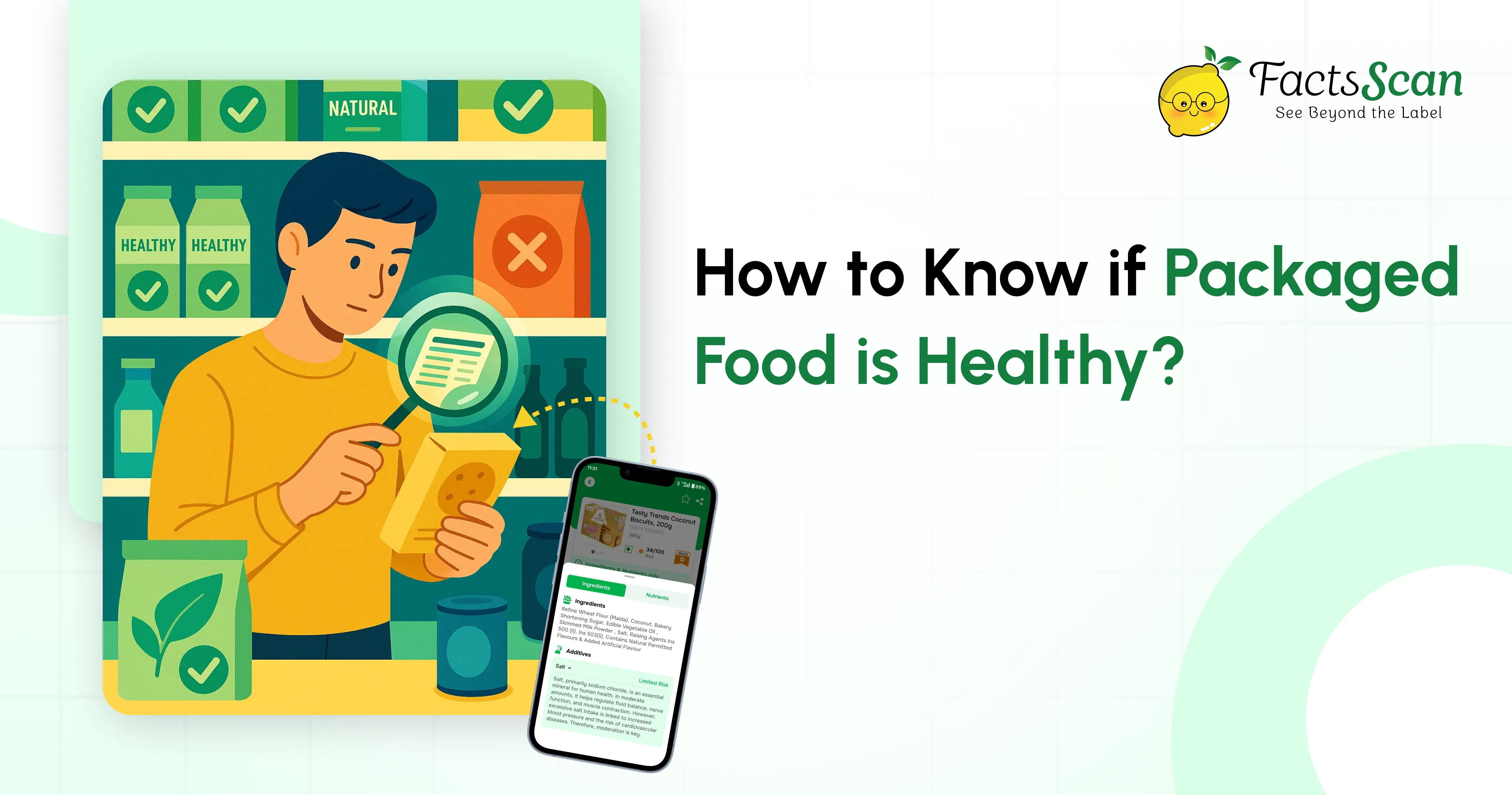
How to Know if Packaged Food is Healthy?
With rising consumption of packaged foods and misleading marketing claims, understanding what makes processed food truly healthy has become essential. This guide covers practical strategies for reading nutrition labels, identifying harmful additives, avoiding marketing tricks, and using modern tools to make informed food choices for better health outcomes.
 22 May 2025
22 May 2025 6 Min Read
6 Min Read 
